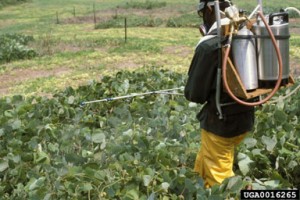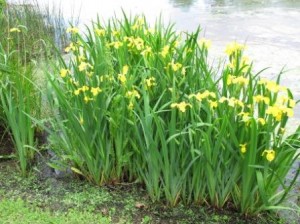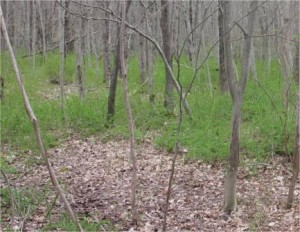
The most important consideration when using any pesticide (the term pesticide is generic and includes herbicides, insecticides, fungicides, etc.) is to read the label first! Although this may seem obvious, it is still of primary importance. Pesticide use in this country is in fact regulated by label language, thus it is a violation of state and federal law to use a pesticide product contrary to label directions. Specific statements on pesticide labels give precautions to be followed. For example, all pesticides not designed for aquatic use will carry the statement: "Do not apply directly to water or to areas below the high tide mark." Pesticides toxic to fish may require a setback from fish-bearing waters, and will include statements that the product is highly toxic to fish. Pesticides that are highly toxic and/or environmentally damaging will be classified as Restricted Use Pesticides, meaning that one needs to be state certified in order to purchase and use these products. In Connecticut all aquatic use of pesticides requires a site-specific permit, issued by the Department of Environmental Protection (DEP).
All pesticide labels have a signal word on them. The signal word is an indicator of the potential human toxicity of the product. The three signal words, in order from highest to lowest toxicity, are: Danger, Warning and Caution. The areas of toxicity to which the signal word applies are acute (single dose) oral, dermal, and inhalation toxicity; also skin irritation and eye irritation. The label will explain the area of toxicity to which the signal word pertains, although it sometimes takes careful reading to understand. The signal word applies to the material in the container, not diluted product. When concentrates are diluted (usually with water) the toxicity will decrease proportionately. Dilution with oil may make the chemical more easily absorbed through the skin, thus any reduction in toxicity may not be in proportion to the dilution.
The herbicides most commonly used for control of invasive plants are glyphosate (active ingredient in Roundup, Accord, and Rodeo), and triclopyr (active ingredient in Ortho Brush-B-Gon, Garlon, and Crossbow, which is triclopyr combined with 2,4-D). Glyphosate and triclopyr have different chemical properties and represent different hazards. Again, the specific protective clothing to be worn, and health hazards of the product will be noted on the product label. Because formulations change, as do the types of protective clothing available, no attempt to specify such will be made here.
Glyphosate has low oral toxicity (acute or chronic) to humans or other animals. Some formulations are irritating to skin or eyes, so precautions to avoid contact should be followed. Glyphosate does not persist or bioaccumulate in the environment. The most significant environmental impact resulting from glyphosate use is modification of habitat due to vegetation killed (of course, this is the effect desired when attempting to control invasive plants).
The oral toxicity of triclopyr is fairly low relative to other pesticides, but not as low as that of glyphosate. Take precautions to avoid exposure. Amine-based triclopyr formulations are corrosive and damaging to eyes and skin, thus they must be handled with a great deal of care. Follow the label directions for protective eyewear and clothing. Toxicity to birds and fish is relatively low, although ester formulations are more toxic to fish than amine formulations or the parent acid of triclopyr.
To optimize herbicidal efficacy, and to avoid injury to yourself, non-target plants and the environment…ALWAYS READ AND FOLLOW THE DIRECTIONS ON THE PRODUCT LABEL!
All herbicides mentioned in this guide are classified as "General Use" products. "Homeowner" products can be purchased over the counter in garden centers, whereas products packaged in larger containers or in more concentrated forms may only be available at agricultural chemical dealerships. In order to purchase or use a "Restricted Use" pesticide, one must obtain certification as a Commercial Pesticide Applicator, which requires passing an exam administered by Connecticut DEP. Also, DEP approval must be obtained prior to application of any pesticide to a body of water.
For control of perennial invasive plants (especially trees, shrubs and woody vines):
Cutting, mowing or using a contact (non-systemic) herbicide will usually not kill well-established (deep-rooted) plants. Regrowth will occur from stumps, underground rootstocks or creeping underground stems (rhizomes). Cutting alone often results in a greater number of sprouts or excessive branching. Non-chemical control of well-established, deep-rooted plants will require either digging up the entire root system or repeatedly cutting the top growth over several years.
Use of a systemic herbicide is often necessary to achieve adequate control of such troublesome invasive plants. Systemic herbicides absorb into the plant foliage and/or stems, then translocate (move) and accumulate to toxic levels in the growing points or roots. Following foliar applications in late summer or fall (prior to leaf color change), systemic herbicides will accumulate in storage tissues below ground. In this way, the herbicide is more likely to prevent regrowth the following year.
p

